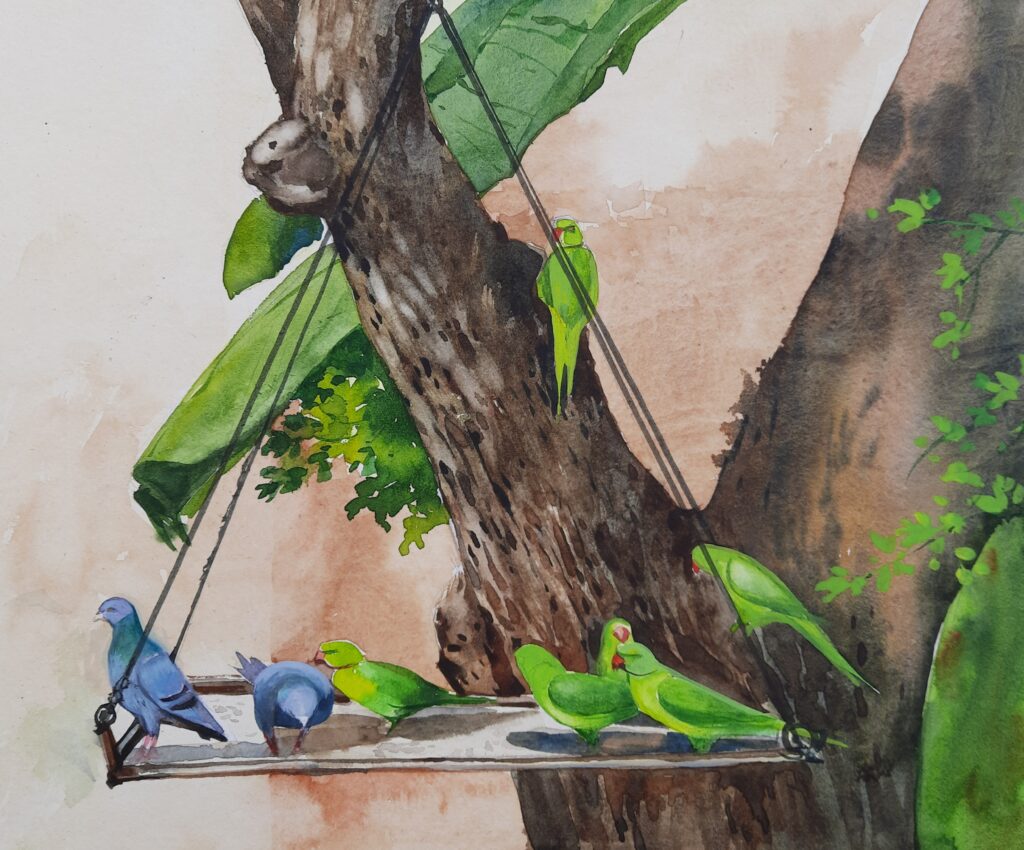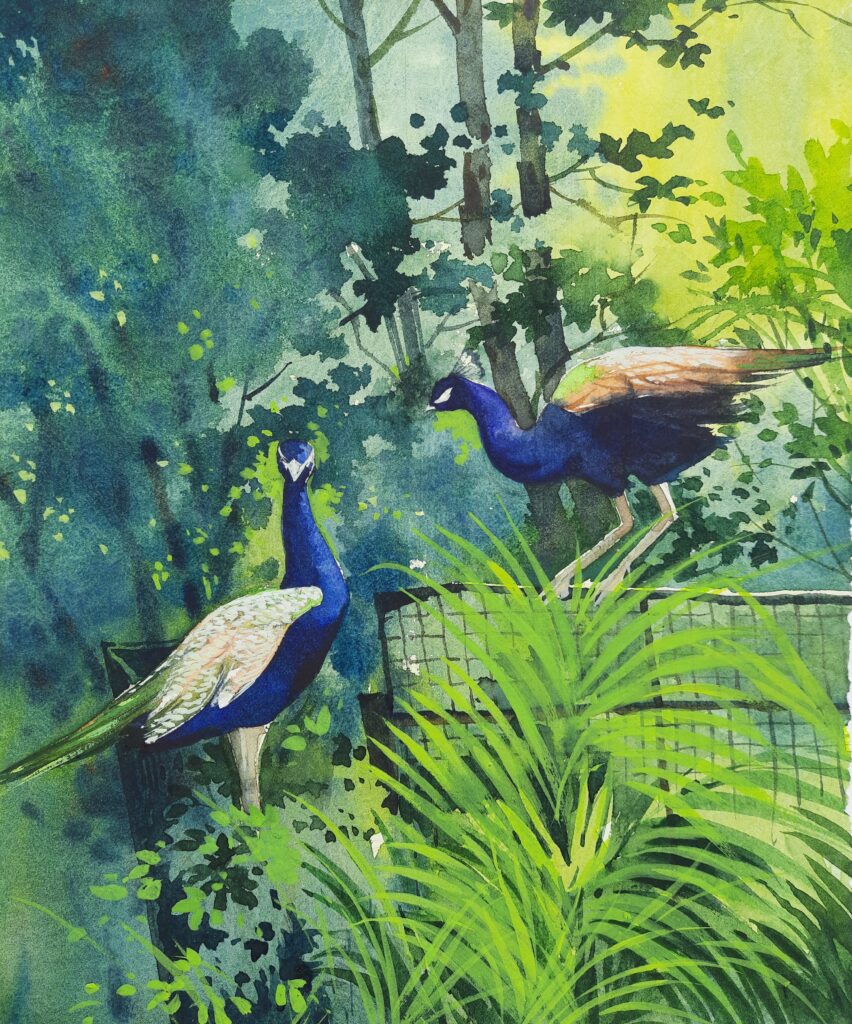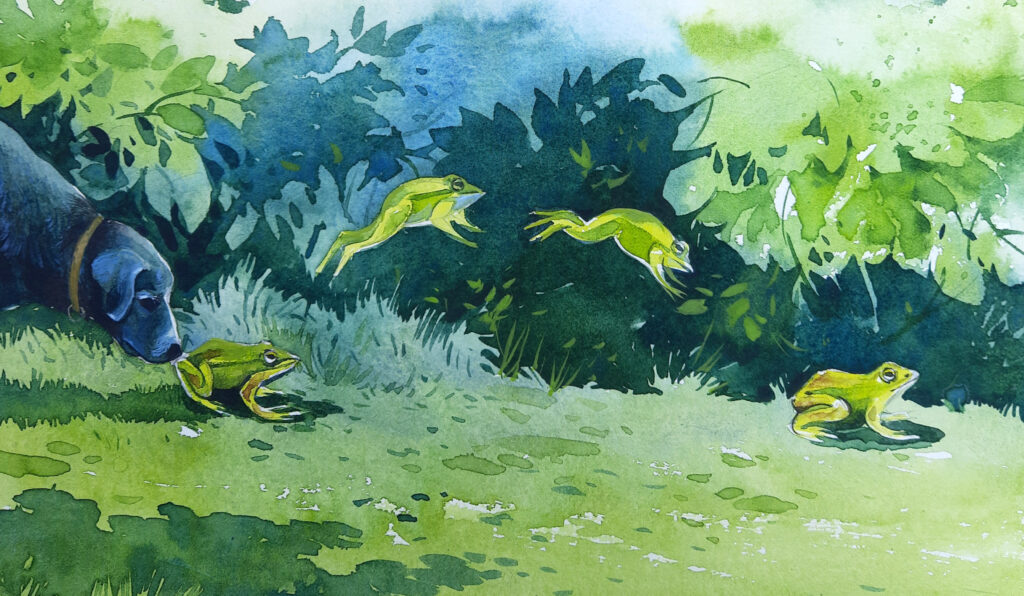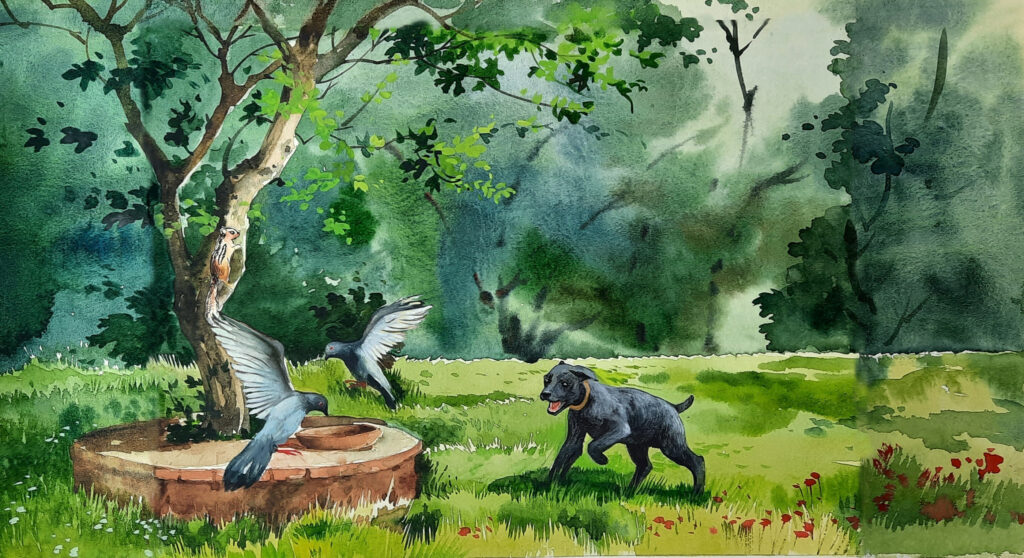Tito was able to make friends with a variety of birds and animals in the garden. Tito became accustomed to the calls, chirpings, and melodies of crows, pigeons, mynas, parrots, peacocks, kites, warblers, ioras, sunbirds, magpies, bulbuls, greater coucals, woodpeckers, shikras, doves, ibises, and owls - the resident campus birds. Tito would have a great time chasing the birds around when we fed them on the lawn. The birds appeared to understand that Tito was merely amusing himself and had no intention of harming them. They’d tease Tito by hop stepping a few feet away and casually resuming feeding. There was also a sizable squirrel population. Tito would chase them across the lawn as they darted past him with impunity.

Tito was afraid of peacocks when he was young as they were much larger than him and had terrible screeching calls – that perhaps scares even lions! Tito kept a polite distance from the peacocks even after he grew up. Migratory birds also frequented the campus. During the wet season, there were red wattled lapwings and black winged stilts on campus, cuckoos in the spring and early summer, and swallows in the winter. Tens of thousands of migrating starlings made the campus their home for 6-8 weeks at the start of the spring season.

Stray cats and dogs were also regular visitors to the garden. Tito was always made to appear dumb by the cats. Tito would rush towards cats, seeking to engage in a friendly game of “catch me if you can.” If they were not caught off guard, the cats preferred to flee. If Tito caught them off guard, the cats would transform themselves into a ball with bristling hair and make a low frightening purring sound, stopping Tito in his tracks a few feet away from them. After staring at Tito, without blinking to convey their self-assurance, the undaunted cats would move away, first slowly while still facing Tito, and then at a gallop with their backs turned to Tito and tails raised. Tito was perplexed as to why his joy of meeting them and his offer to play were being scorned upon so harshly. Tito never learned his lesson and continued to court the cats by trying to persuade them to play with him. His efforts never worked!
We normally shooed away stray dogs, except for one, a brown female dog that eventually became our second pet. Then there were langurs (cap-wearing monkeys!). They would come in big groups and visit the campus every week to ten days, depending on their foraging cycle. The time between their visits allowed the plants, shrubs, and trees to produce new shoots, leaves, buds, and fruits for the langurs to eat. They would try to destroy our garden on every visit. Tito’s full-throated barking, demonstrating his utter disapproval of their presence was useful in keeping the langurs at bay.
The wet season spawned a colony of frogs in the pond adjacent to the house. Large, yellow-green frogs would float in the pond’s water, and as it rained, their coordinated croaking resonated throughout the house. There were nights when the croaking would last all night, interrupted only by the pitter patter of rain. Tito’s maiden encounter with a frog stands out in my mind. Tito was young when he saw a frog, a lifeless lump on the yard. Tito approached the frog with caution, a little apprehensive of the strange creature, head bowed and nose sniffing the grass leading up to the frog. The frog remained motionless until Tito’s snout almost brushed its back. The frog then leapt a couple of feet away from Tito’s sniffing snout with a forceful thrust of its powerful hind legs. Taken aback, Tito recoiled with a low bark of surprise. The very next instant, however, Tito dashed towards the frog, fueled by his curiosity. The frog, however, had had enough of Tito. It vanished over the hedge into the pond with a few vigorous bounds.


